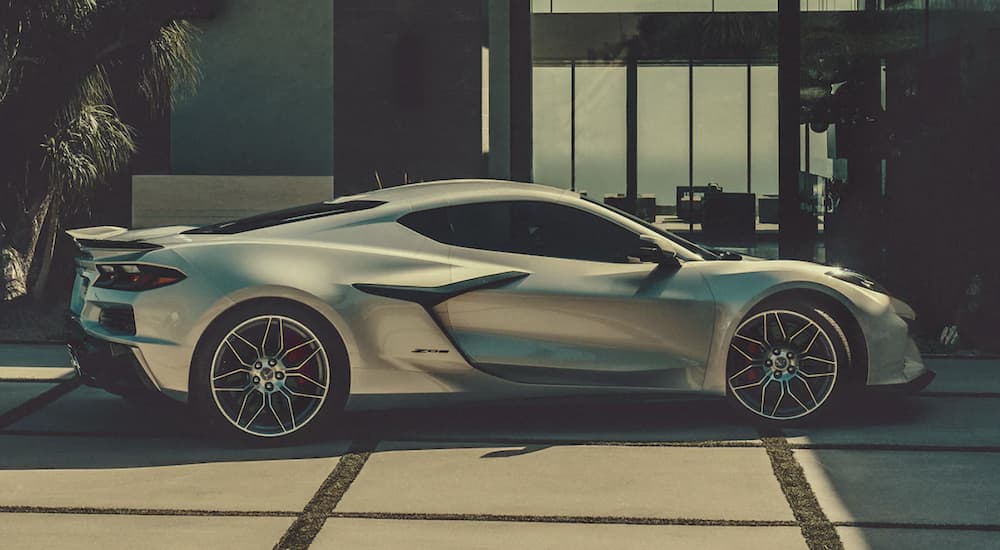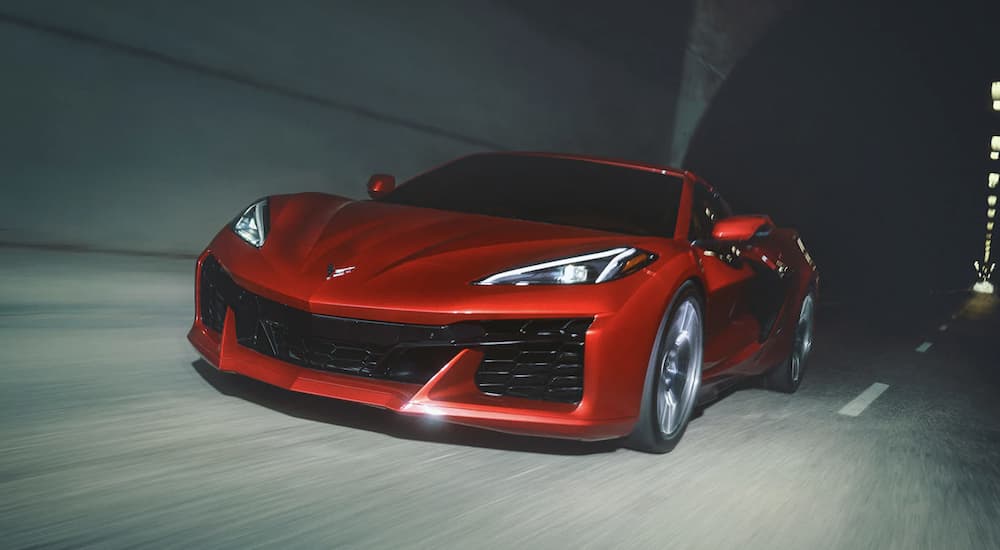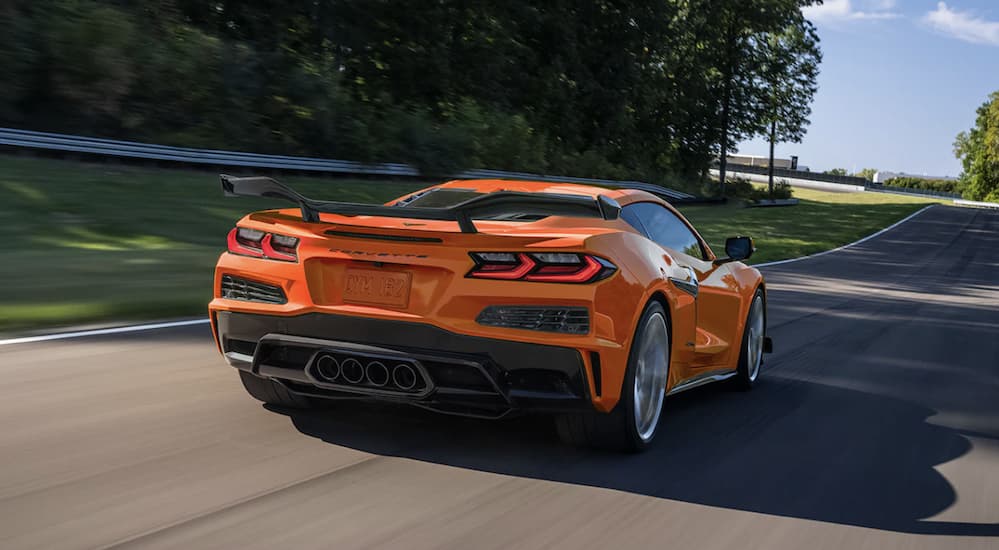Auto enthusiasts consistently talk about the next big advancement in car culture. Usually, the discussion is about specific vehicles, such as the 2023 Corvette Z06. But behind the mid-engine supercar is a unique new powertrain that is quite unlike the current offerings on the market. This new engine deserves to be examined independently of the car it comes in, especially because Chevy engines are renowned for being swapped into used cars of all types. The 5.5-liter LT6 V8 is a completely different breed from the legendary LS-series, and it’s redefining what we expect not just from Chevy sports cars but from small block performance V8 engines in general.
While the future may be uncertain, the present indicates that the LT6 could end up being a hugely popular engine, especially for those looking to upgrade the performance of a used Chevrolet, or heck, any vehicle with an engine bay that can house the compact power plant and make use of its high-compression output. The unique capabilities of this naturally aspirated engine, combined with its reasonable size, give it a lot of versatility on the market and could usher in a new generation of custom sports car enthusiasm.
Naturally Aspirated; No Boost Needed
The big selling point for the 5.5-liter LT6 V8 is that it’s a naturally aspirated flat-plane crank engine. No turbocharger, no supercharger. It’s all based on a naturally induced air intake without any forced induction that can lead to quickly worn parts in the case of a supercharger or dealing with trying to offset the power loss from turbo lag that you get with a turbocharger. The naturally aspirated LT6 also means that it can be fitted to a number of other vehicles without having to worry about making room in the engine bay for additional exhaust piping, cooling, or other attachments that come with a boosted powertrain.
Natural aspiration gives the LT6 much more leeway in functionality because you get a powerful 670 hp engine that produces 460 lb-ft of torque right out of the box. Peak power arrives at a healthy 8,400 RPM, and the rev limiter kicks in at 8,600 RPM. That’s approximately 15% higher than the base rev limit on Ford’s 5.0-liter Coyote V8 and 30% higher than the limiter on Chevy’s 6.2-liter LS3 V8. The LT6 is also impressive because it’s making 30 hp more than the supercharged LT4 V8. Those are extremely impressive gains, which give the LT6 a lot of headroom to perform under different circumstances without much tweaking or modding.

Compression Ratios vs Forced Induction
For better or worse, the LT6 V8 leaves little room for modding the core block to squeeze any additional power out of it. It’s already rocking a specially optimized intake manifold and an insane compression ratio of 12.5:1 to help squeeze every bit of power out of its displacement. This puts the LT6 well above the trusty LS3, which has a compression ratio of 10.7:1 and leaves a lot on the table for tuners to take advantage of. Of course, the flip side of this is that Chevy’s engineers already did the work, so you don’t have to worry as much about upgrading the engine yourself to get more power out of it if you swap it into a used car.
A lot of this boils back down to expert engineering on Chevy’s part. A wide bore with a short stroke combined with reinforced components makes for a durable, high-performing engine. The bore is 4.1 inches, while the stroke is 3.1 inches. So the pistons are traveling a shorter distance at a much higher rate than many other engines currently on the market, giving the LT6 an extremely efficient power output despite having a lower displacement than some of its larger competitors. Not only that, but it’s a smaller displacement engine without forced induction managing similar power output as its boosted counterparts. It’s all manner of crazy impressive performance that the engineers managed to squeeze out of the LT6.
Tuning Potential and Scalability
What does this mean for those who potentially get an LT6 crate engine or pull one out of a used Chevy? Well, there likely won’t be much leeway for adding forced induction without blowing up the engine, given how high the compression ratios are already. While we will almost certainly see some crazy supercharged and turbocharged builds, they probably won’t be something any average Joe Schmoe could pull off in a garage with a socket wrench and screwdriver.
There have already been leaks showing CAD diagrams of what a modified LT6 might look like as a twin-turbo powerplant. It flies in the face of the current naturally aspirated design, and obviously, it’s a larger and more complex setup than the current iteration of the LT6, but it does open up a lot of potential if it were to be pursued. What sort of power gains could you get out of a properly tuned, twin-turbo LT6 V8? What sort of transmission would you marry to it if you were doing a custom build? And would it be better served with an all-wheel drive or a rear-wheel drive configuration?
Questions, possibilities, and scalability are all left to the wind right now. However, the potential is absolutely there. Just like the LS series, the LT6 is small enough to tuck into a wide range of different vehicles. Don’t be shocked to see a variety of used Chevrolet models of the sleeper, sports, and muscle car variety get an engine swap with the LT6 (one way or another) and tear up the tuner scene, either for overt performance gains or just for the sheer novelty of it.
Taking Automotive Engineering to the Next Level
While many automakers are heading toward hybrids and electric powertrains for their popular nameplates, it’s exciting to see Chevy stick with a classic internal combustion engine for the 2023 Chevy Corvette Z06. Not only is it all-gasoline, but it’s a naturally aspirated engine. This choice gives it a lot more flexibility, a lot more reliability, and a lot more durability in the long run. This engine could easily usher in a new wave of enthusiasts hot-swapping the LT6 into all manner of used vehicles that can fit it. Given its displacement and size, it would be quite the unholy abomination to see an LT6 in a Mustang or worse yet (better yet?) in a Challenger.
Another highlight of the LT6 is that it’s an engine that could be around for a while. The complexity of its engineering may make it a bit harder to “upgrade,” but it allows the engine to provide enough power without needing a supercharger, a turbocharger, or other headaches. If you have an older used Chevrolet or a pet project where you plan on doing a lot of exterior overhauling, one big benefit of the LT6 is that you can just drop it in and go. That way, you can focus on other expenses rather than tuning the engine to get the performance that you want. Of course, we still have to see how well the LT6 performs in the long run, but it’s poised to redefine a generation thanks to its impeccable engineering.





